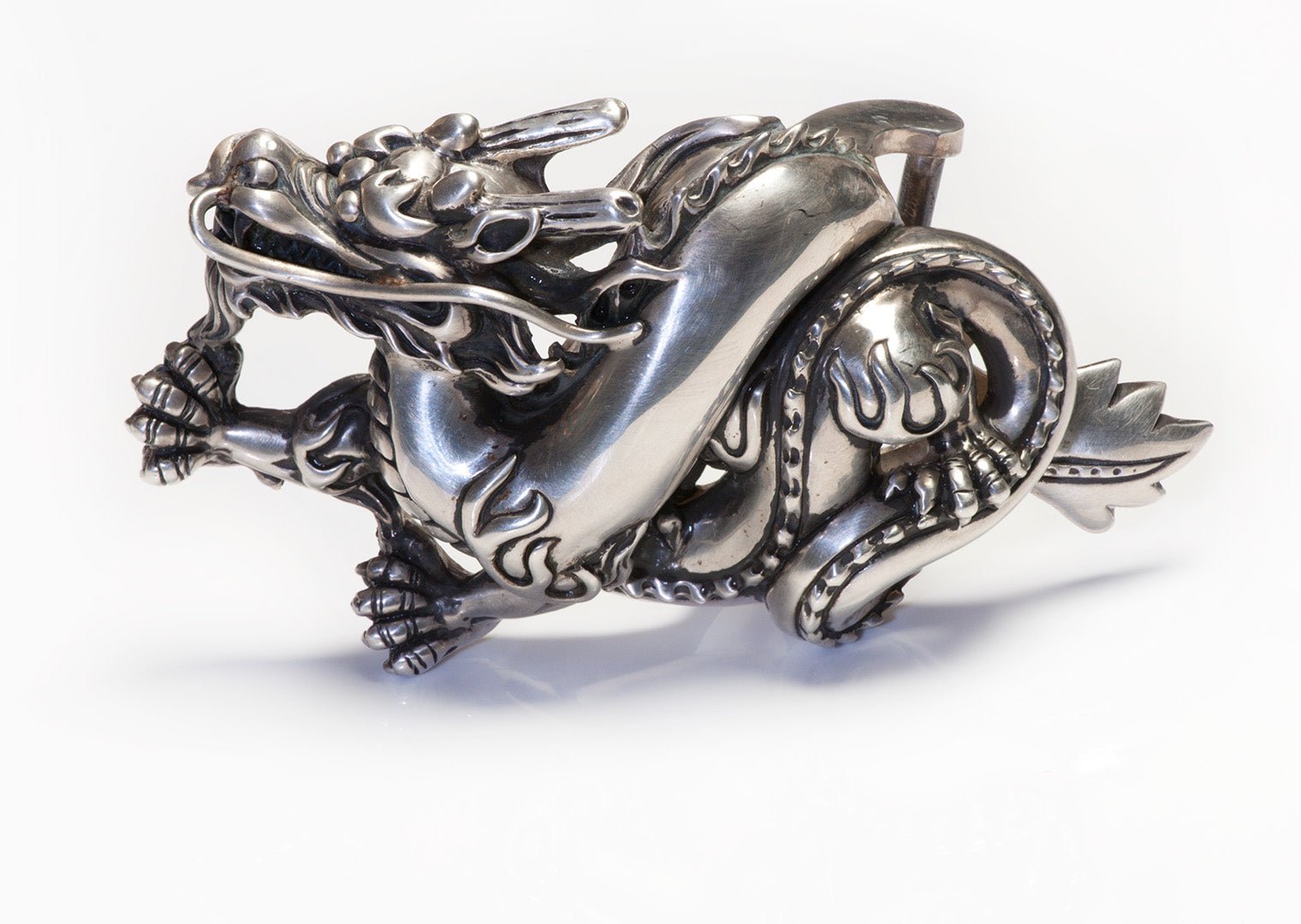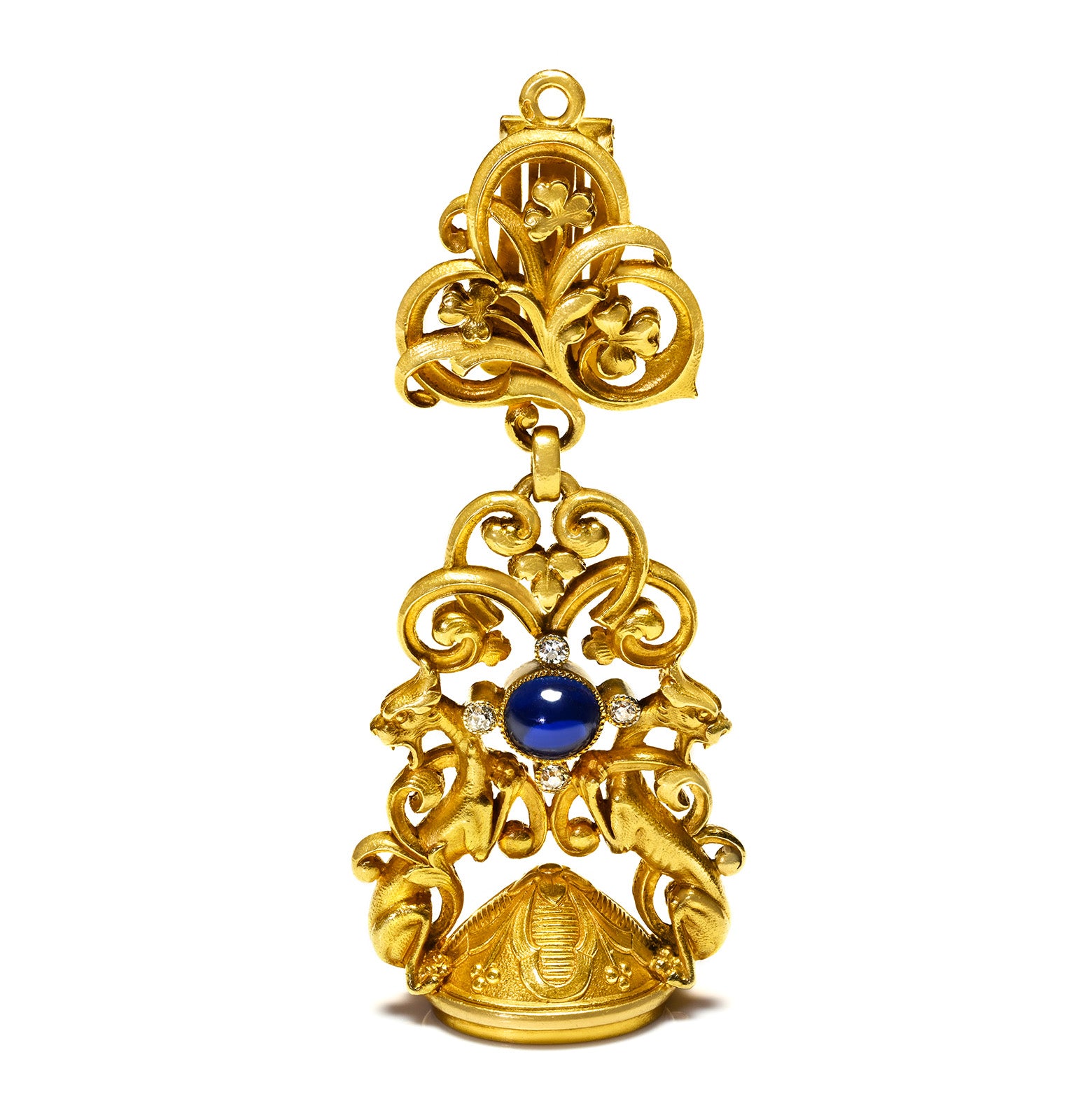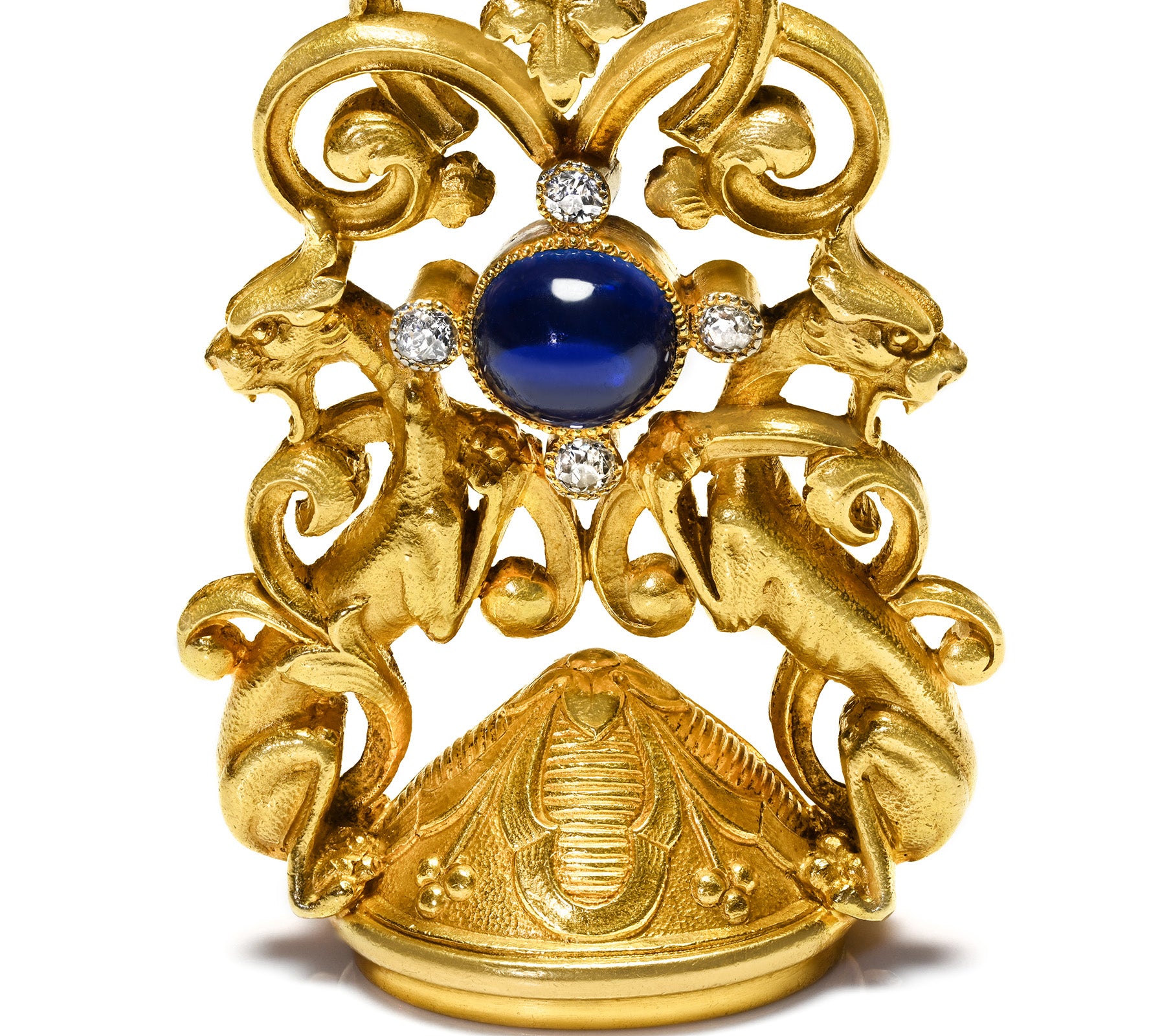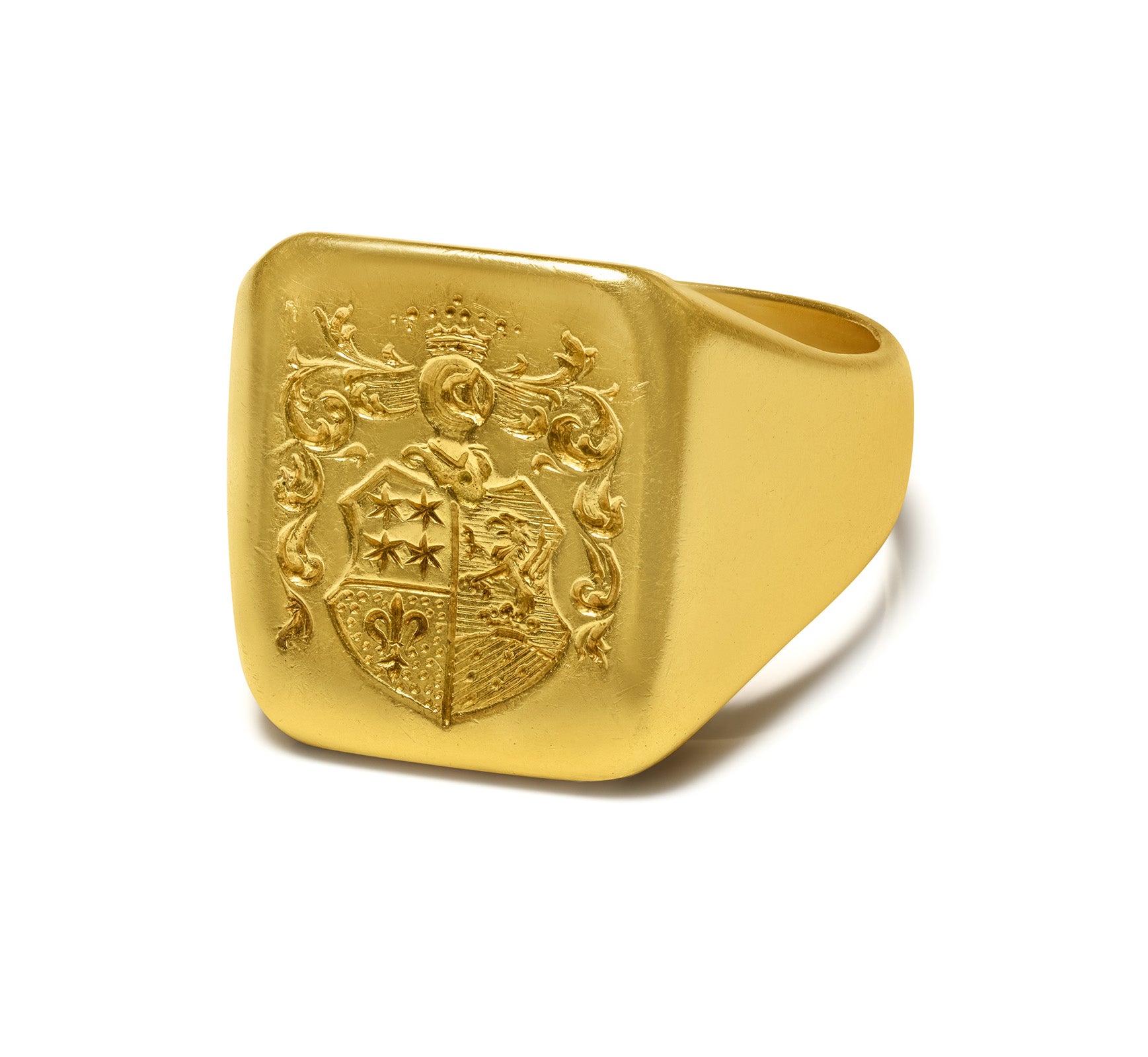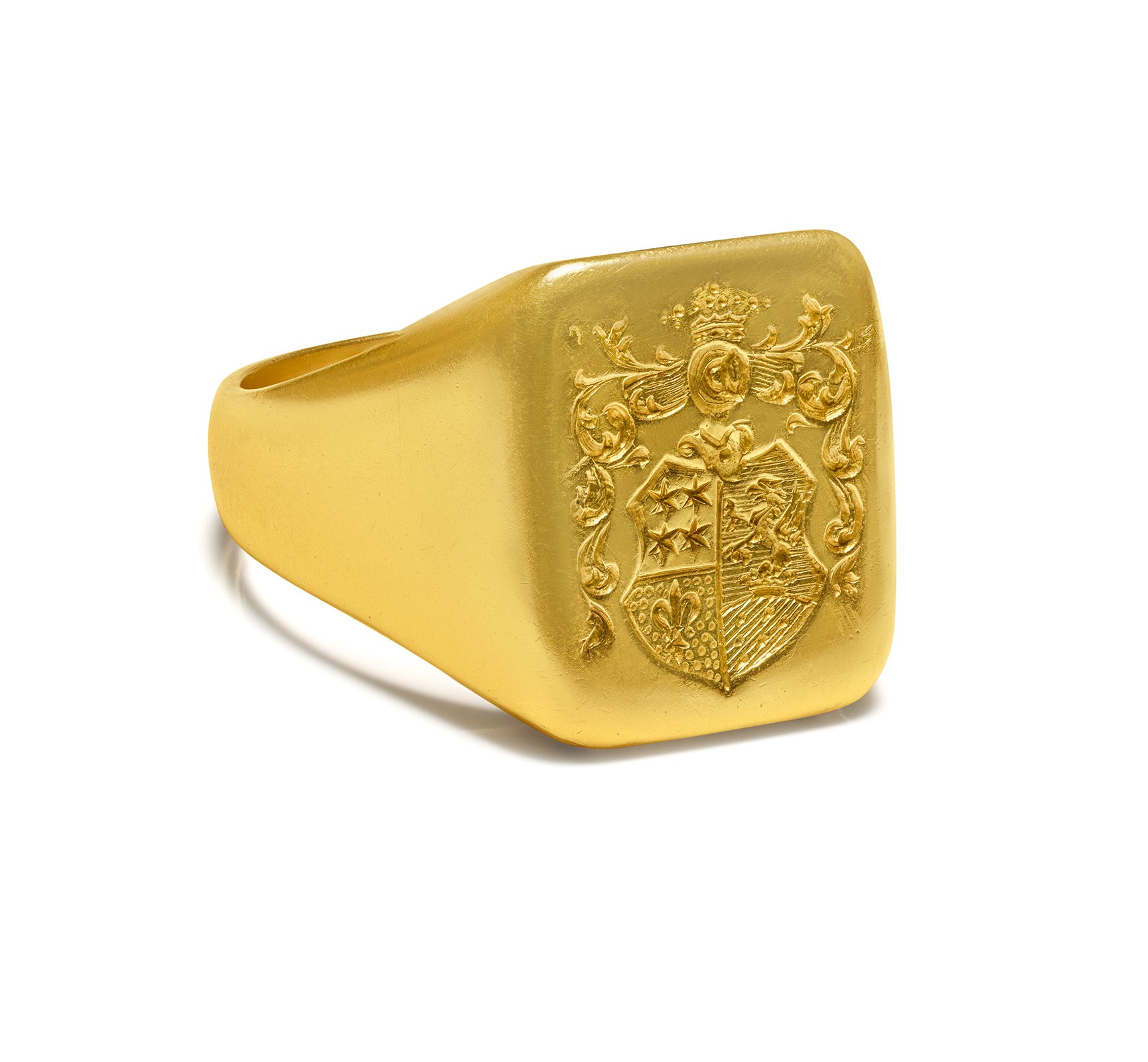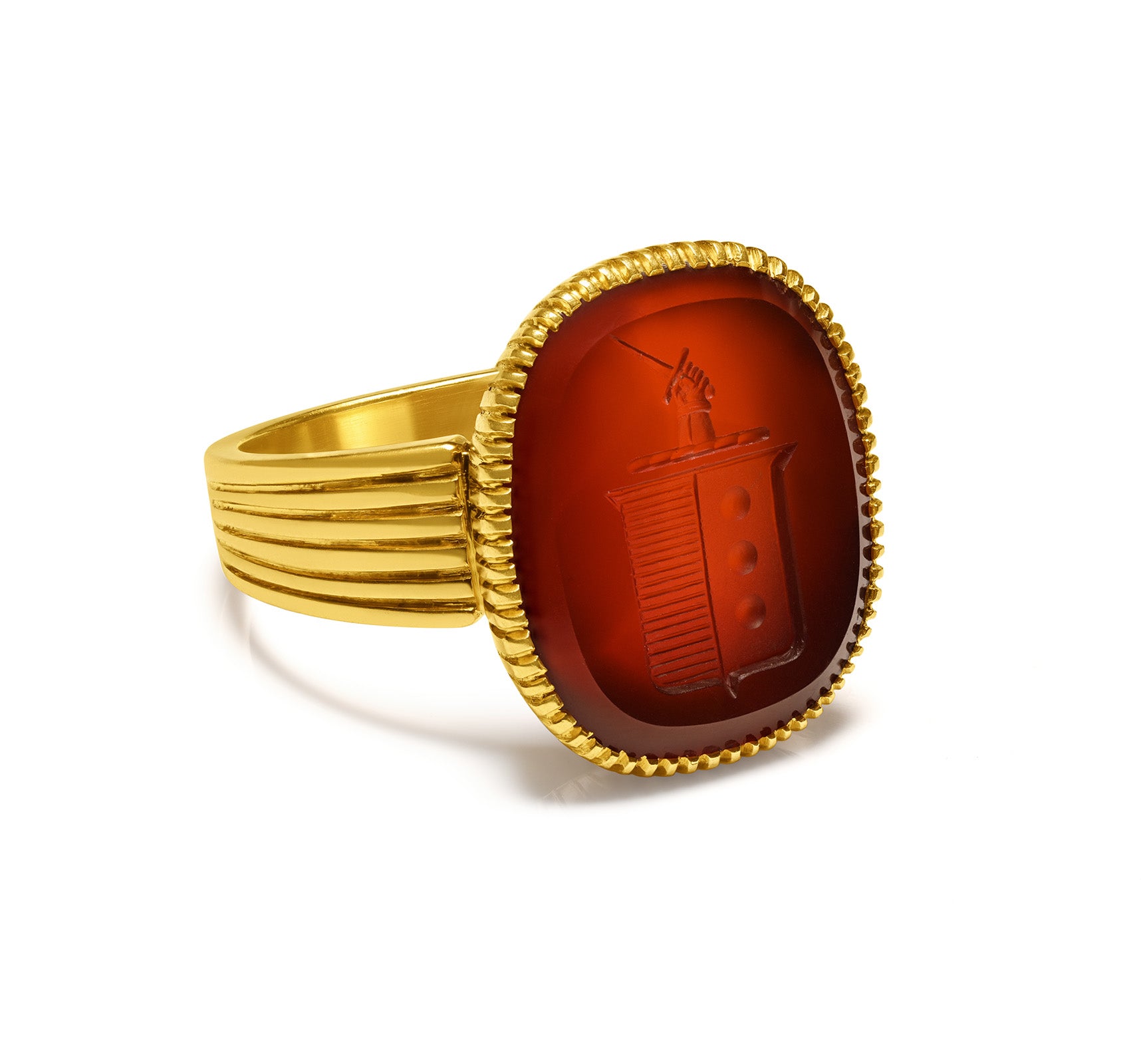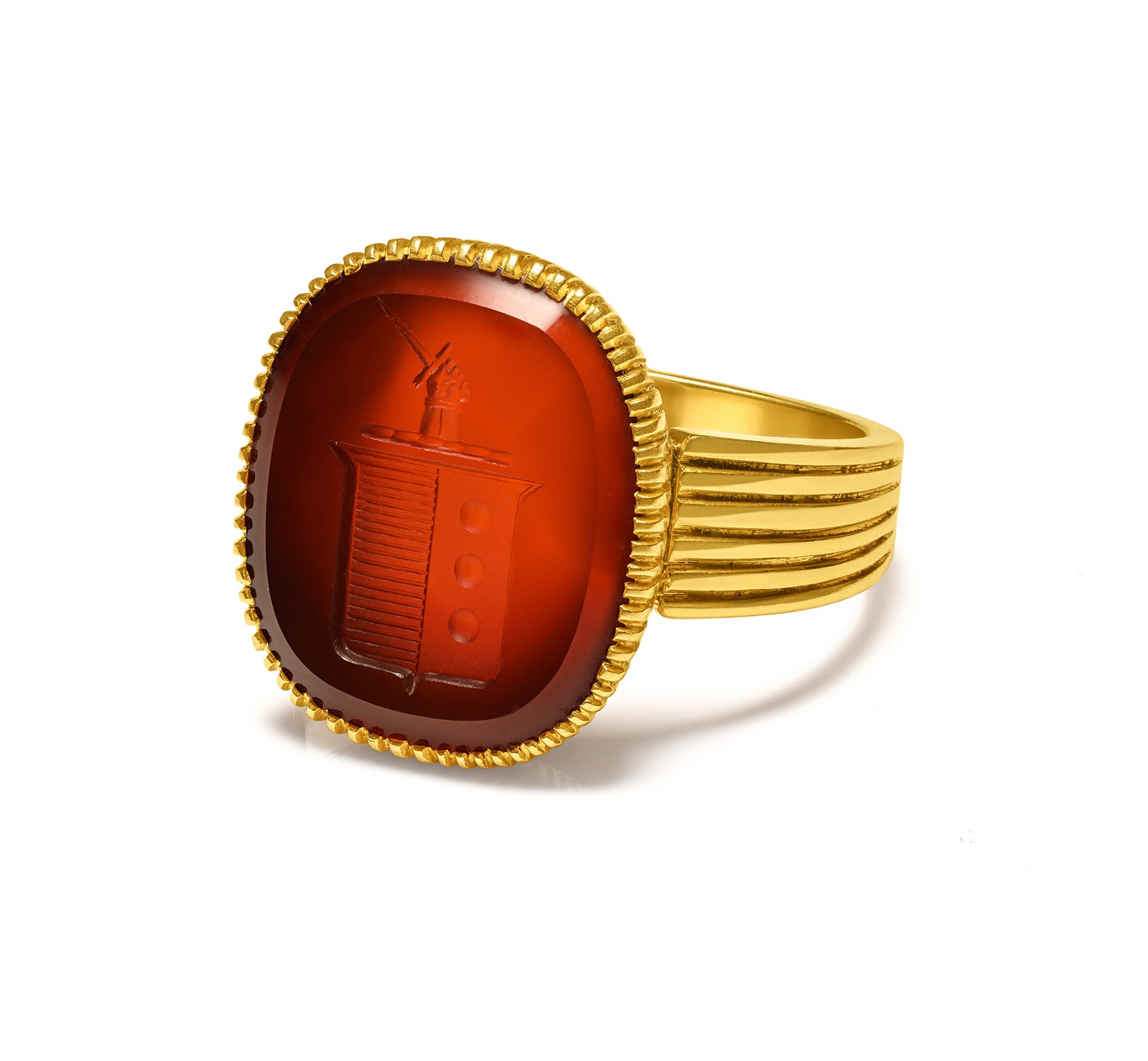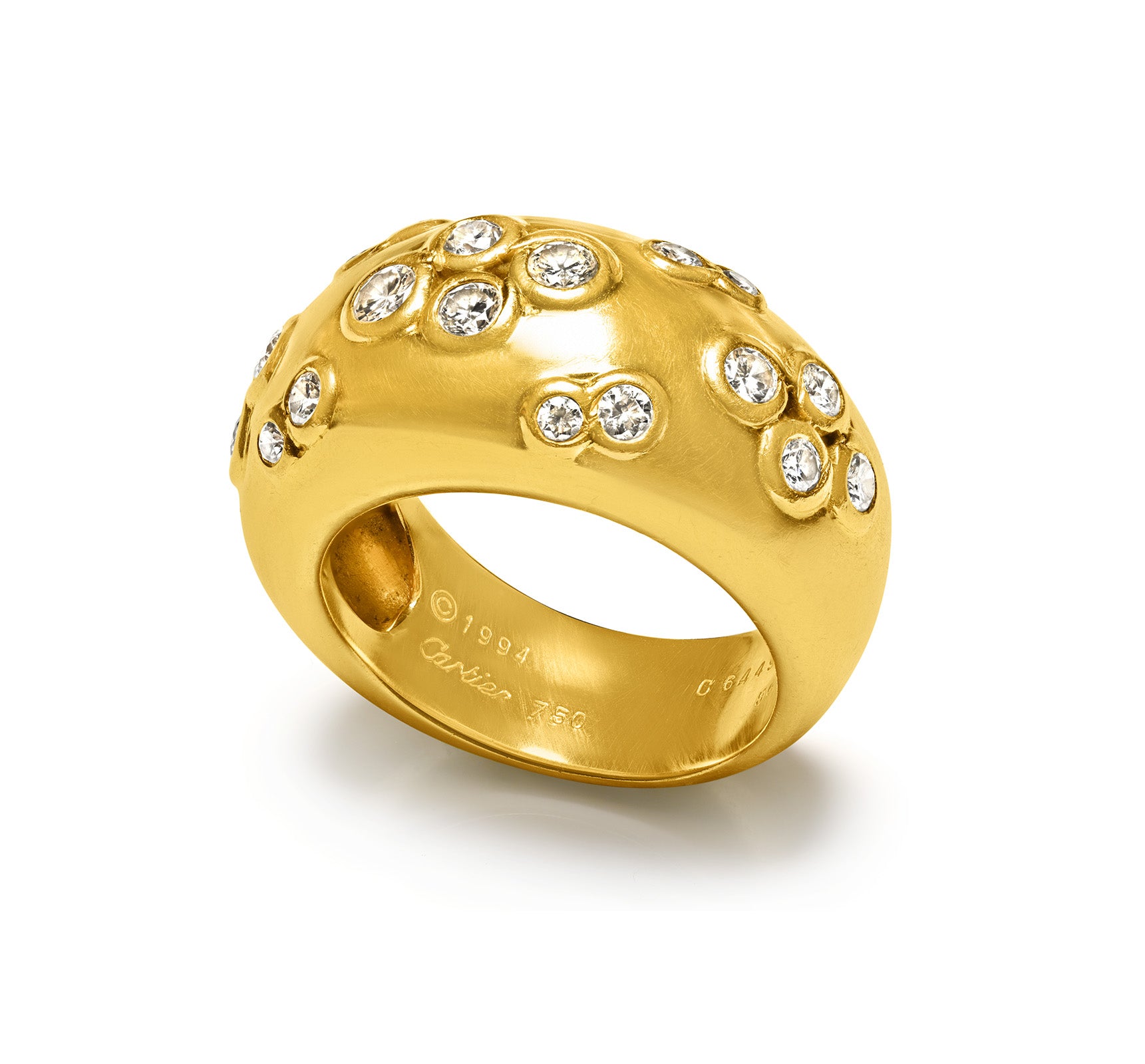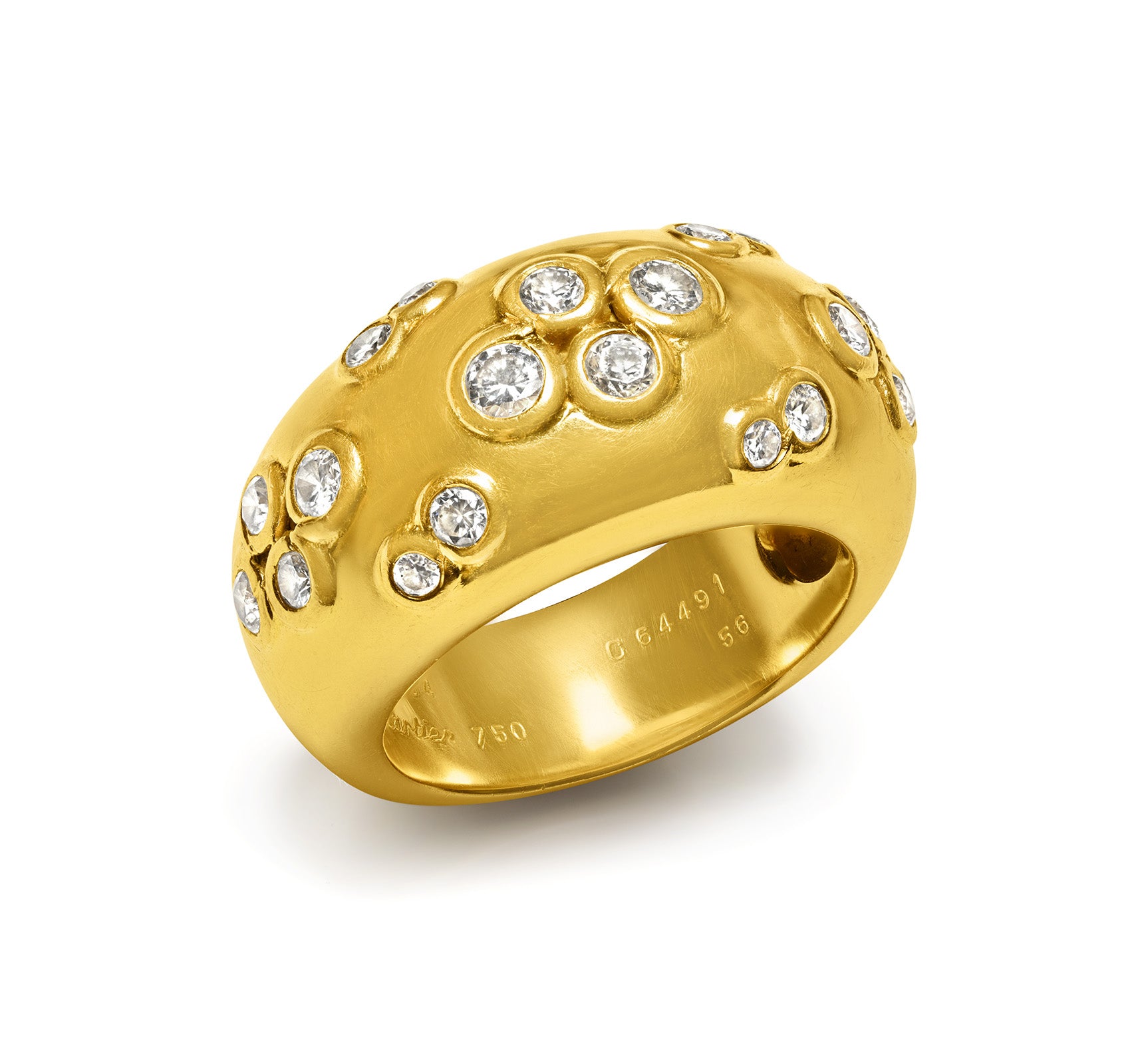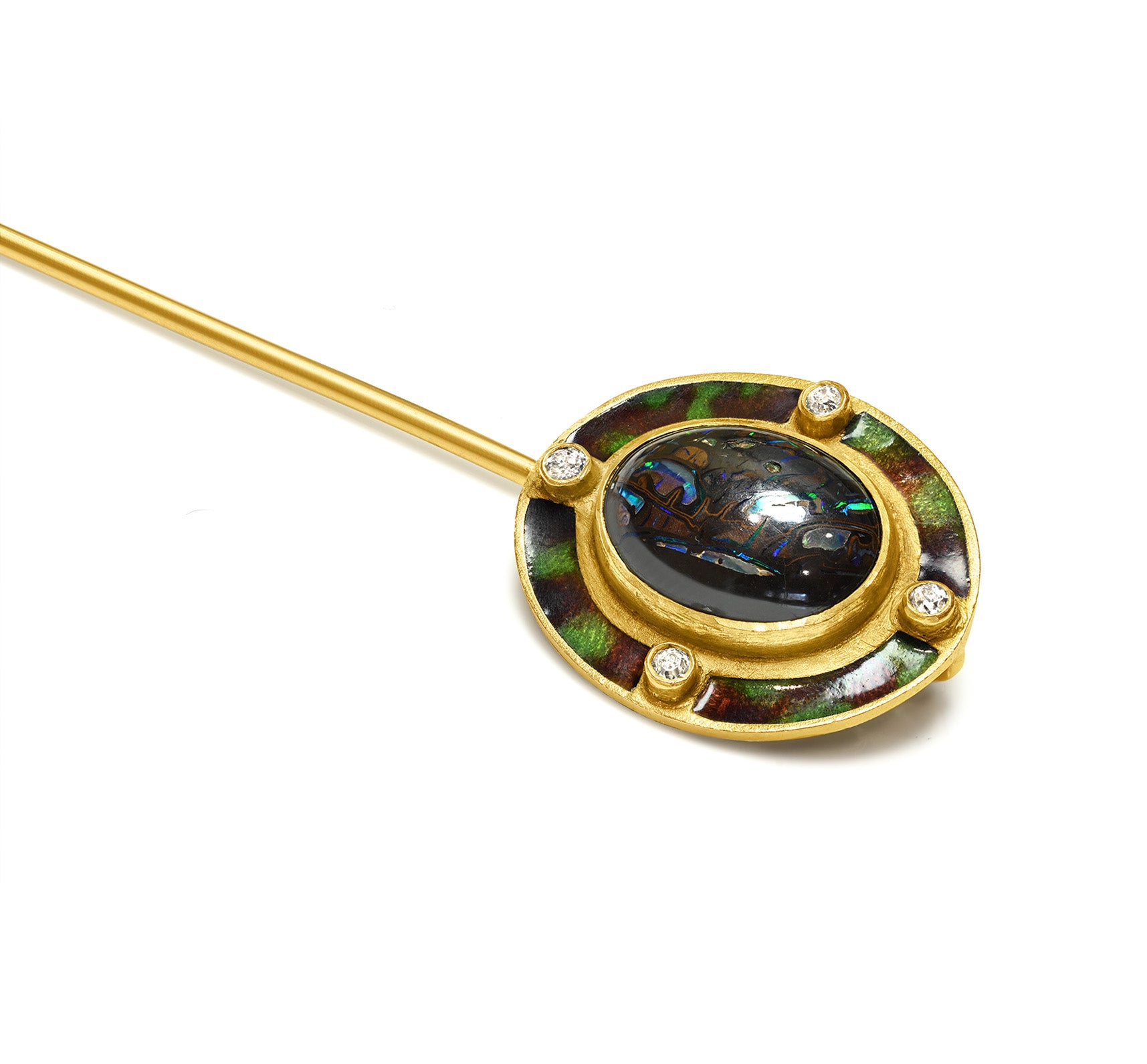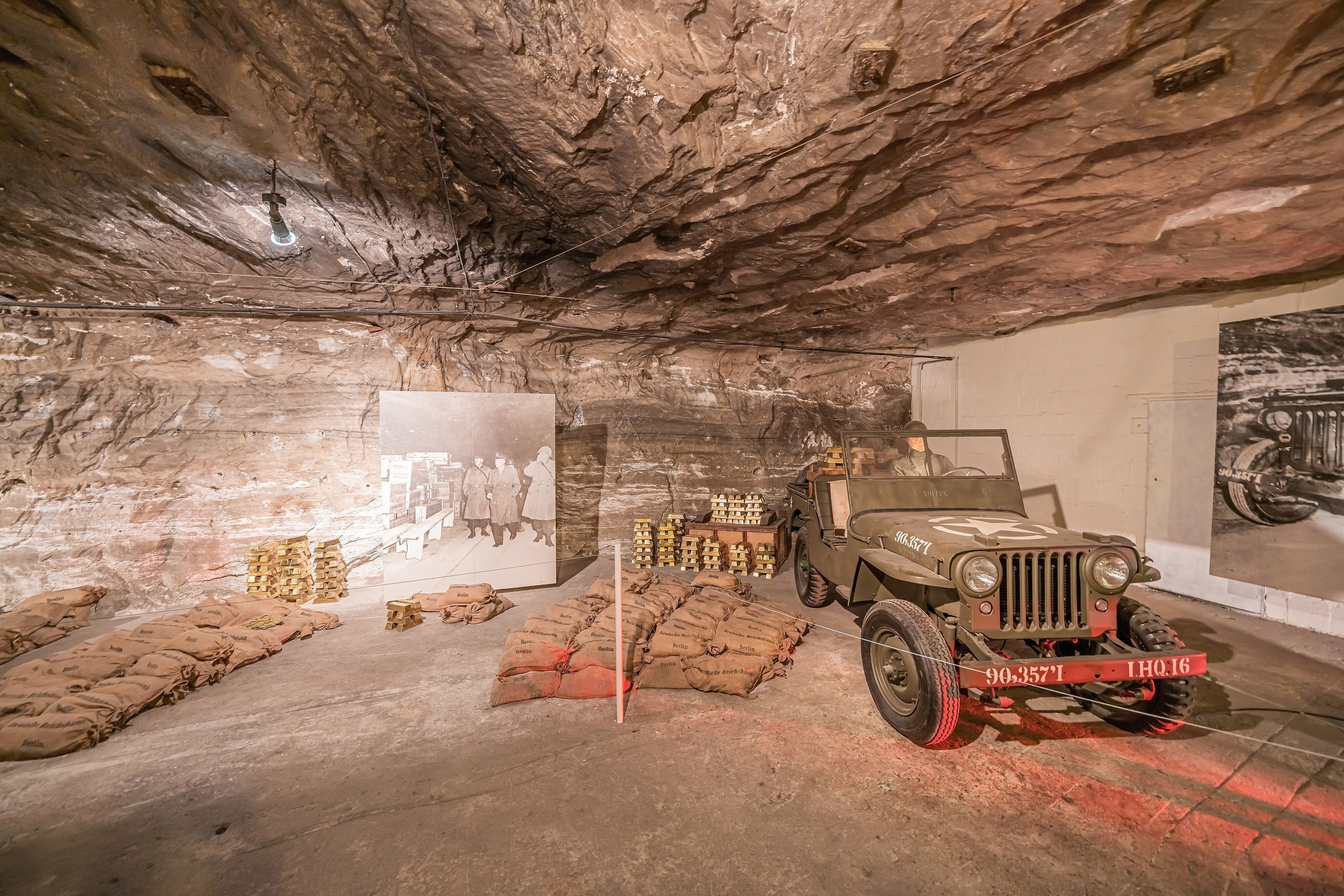
The Nazi Treasure: Lost Gold, Myths, and Truth
ew stories from World War II have captivated historians, treasure hunters, and the public like the enduring mystery of Nazi treasures. During the Third Reich, vast quantities of gold, jewels, artworks, and currencies were seized from occupied nations, looted from victims of the Holocaust, and hidden across Europe as the war drew to its catastrophic end.
Some of these treasures were recovered—famously in the Merkers salt mine in 1945—while others vanished into legend: tales of armored trains loaded with gold, crates dumped into Alpine lakes, and tunnels filled with priceless artifacts.
The line between history and myth is often blurred, yet the fascination persists. How much treasure did the Nazis actually amass? What was truly found, and what remains missing? And why do these stories still haunt Europe today?
Table of Contents
-
-
Nazi Gold: Organized Looting of Europe
-
Where the Gold Went: Reichsbank, Switzerland, and Safehaven
-
The Merkers Salt Mine Discovery (1945)
-
Unsolved Mysteries: Trains, Lakes, and Tunnels
-
Treasure Hunting After 1945
-
Recovered vs. Missing Treasures After the War
-
Why the Legend Endures
-
Nazi Treasure in Popular Culture
- FAQ: Nazi Treasure Explained
-
 The salt mines' complex, which is being used for tourist excursions too, in Merkers (Thuringia, Germany). The picture shows the Gold room (the room where in early 1945 Nazi gold had been stored), in 440m underground depth. Photo Credit: A.Savin, FAL, via Wikimedia Commons
The salt mines' complex, which is being used for tourist excursions too, in Merkers (Thuringia, Germany). The picture shows the Gold room (the room where in early 1945 Nazi gold had been stored), in 440m underground depth. Photo Credit: A.Savin, FAL, via Wikimedia Commons
Nazi Gold: Organized Looting of Europe
The story of Nazi treasure begins not with hidden tunnels or mysterious trains, but with a systematic campaign of looting across Europe. From the earliest years of World War II, the Nazi regime made the seizure of wealth an integral part of its expansion strategy.
Historians estimate that the Nazis looted between 600 and 800 tons of gold, in addition to billions of dollars’ worth of currency, jewels, and cultural treasures.
Nazi Gold: Key Facts and Figures
-
600–800 tons of gold looted by the Nazis during World War II.
-
65,000 gold bars later redistributed by the Tripartite Gold Commission.
-
Billions of dollars in jewels, currency, and artworks seized across Europe.
-
Billions still missing, hidden or untraceable after 1945.
Timeline of Major Events
-
1938 – Austria: Nazi Germany seizes the Austrian National Bank’s reserves.
-
1939 – Czechoslovakia: Czech gold in the Bank of England is handed over to the Reichsbank.
-
1942 – Holocaust Loot: “Victim gold” from concentration camps flows into Reichsbank reserves.
-
1945 – Merkers Salt Mine: Over 100 tons of gold, currency, and art uncovered by U.S. forces.
-
Post-war – Amber Room & Gold Train: Still missing, fueling speculation and legend.
Confiscation of National Reserves
One of the most immediate targets of the Third Reich was the gold reserves of occupied nations. As German forces swept across Europe, they seized the central bank holdings of countries such as:
-
Austria (1938) – Following the Anschluss, the Nazis took control of the Austrian National Bank and its reserves.
-
Czechoslovakia (1939) – Nazi authorities forced the Bank of England to release Czech gold that had been deposited in London, sparking international outrage.
-
Belgium, the Netherlands, Poland, and others – Central bank reserves were transferred directly to the Reichsbank in Berlin.
By 1942, Germany had amassed billions of dollars’ worth of foreign gold, much of which was melted down, recast, and marked with Nazi insignia.
Loot from the Holocaust
Perhaps the most chilling aspect of Nazi gold was the systematic plundering of victims of the Holocaust. Personal belongings—including jewelry, coins, and even gold teeth—were confiscated in ghettos and concentration camps. This horrific practice became known as “victim gold”, and much of it was sent to the Reichsbank to be melted down and added to the regime’s reserves.
Art and Cultural Treasures
While gold and currency were the backbone of Nazi looting, the regime also targeted Europe’s cultural heritage. The infamous Einsatzstab Reichsleiter Rosenberg (ERR) was tasked with confiscating artworks, manuscripts, and religious treasures. Some of these objects were destined for Hitler’s planned Führermuseum in Linz, while others were sold to finance the war.
Organized at the Highest Levels
The looting was not random but carefully orchestrated. The Reichsbank under Walther Funk, the SS under Heinrich Himmler, and other Nazi officials oversaw the transfer of valuables into the German financial system. Switzerland and other neutral countries often served as intermediaries, laundering stolen gold through complex banking transactions.

Gold Bullion - Stevebidmead, CC0, via Wikimedia Commons
Where the Gold Went: Reichsbank, Switzerland, and Safehaven
Once seized, Nazi gold and treasures did not simply vanish into scattered vaults. They were funneled into the Reich’s financial system, laundered through neutral intermediaries, and—toward the end of the war—hidden in mines, tunnels, and even lakes.
The Reichsbank: The Central Hub
At the heart of this operation was the Reichsbank in Berlin, which acted as the main repository of looted wealth. Gold bars, foreign currencies, and confiscated valuables were melted down, recast, and stamped with Reichsbank markings. The funds were used to:
-
Purchase raw materials critical to the war effort.
-
Pay for weapons and technology from abroad.
-
Prop up the collapsing German economy in the later years of the war.
The Reichsbank also held “victim gold” seized from concentration camps, blurring the line between state finance and crimes against humanity.
Switzerland: The Neutral Banker
Perhaps the most controversial aspect of Nazi gold history involves Switzerland. Neutral but heavily entangled in the war economy, Swiss banks—including the Swiss National Bank—accepted billions in Nazi gold. Much of this gold had been stolen from occupied nations or melted down from personal belongings.
While Switzerland has argued that it was simply conducting business with a neighboring state, post-war investigations revealed that the Swiss financial system enabled the Reich to convert stolen bullion into usable foreign currency. This allowed Germany to continue trading even after international sanctions.
The Role of the Bank for International Settlements (BIS)
The Bank for International Settlements (BIS) in Basel, Switzerland, has also faced scrutiny. Founded to manage post–World War I reparations, the BIS facilitated transfers of gold between central banks, including those under Nazi control. For a time, it even processed transactions that involved stolen Czech gold, raising ethical questions that persist to this day.
Operation Safehaven: Allied Investigations
As the war drew to a close, the Allies launched Operation Safehaven, a sweeping effort to track down and prevent Nazi leaders from hiding wealth abroad. Intelligence reports documented attempts to move gold into:
-
Neutral countries like Spain, Portugal, and Turkey.
-
Swiss vaults, often under false identities.
-
South America, where Nazi fugitives later established exile communities.
Although some assets were recovered, vast sums disappeared into international banking networks. The precise amount of Nazi gold that slipped through remains unknown, feeding speculation about hidden caches that might still exist today.

Gold Bullion by Ank Kumar, CC BY-SA 4.0, via Wikimedia Commons
The Merkers Salt Mine Discovery (1945)
Among all the legends of Nazi treasures, one stands out as an undeniable historical fact: the discovery of the Merkers salt mine by U.S. forces in April 1945.
A Hidden Vault in Thuringia
As Allied troops advanced into Germany, local civilians revealed to American soldiers that enormous quantities of gold and valuables had been hidden in a vast salt mine near the village of Merkers, in Thuringia. Acting on these tips, soldiers of the U.S. Third Army entered the mine shafts and uncovered one of the greatest treasure hoards of the 20th century.
What They Found
Inside the mine’s chambers lay a staggering collection of wealth:
-
Over 100 tons of gold bullion (about 8,000 bars).
-
Thousands of bags of gold coins and currency from across Europe.
-
Stacks of foreign banknotes and Reichsmarks, amounting to hundreds of millions in value.
-
Personal valuables including jewelry, watches, and items confiscated from Holocaust victims.
-
Priceless artworks and cultural treasures, some destined for Hitler’s planned museum in Linz.
-
Secret Reichsbank documents detailing financial transactions and the systematic looting of occupied nations.
The Importance of Merkers
The Merkers discovery was more than just a sensational find. It provided concrete evidence of the scale of Nazi looting and the central role of the Reichsbank. The treasure was later transferred to secure Allied facilities, with much of the gold returned to rightful owners under the Tripartite Gold Commission.
For historians, Merkers stands as the clearest example of how Nazi treasure was hidden and, in some cases, successfully recovered. Yet it also raised a pressing question: if such an immense cache was found in one mine, how many others might still be hidden?


The salt mines' complex, which is being used for tourist excursions too, in Merkers (Thuringia, Germany). The picture shows the Gold room (the room where in early 1945 Nazi gold had been stored), in 440m underground depth. Credit: A.Savin, FAL, via Wikimedia Commons
Unsolved Mysteries: Trains, Lakes, and Tunnels
While the Merkers salt mine discovery is fully documented, many other stories of Nazi treasure remain unsolved mysteries. These tales, passed down through witness accounts, rumors, and local folklore, continue to fascinate treasure hunters and historians alike.
The Nazi Gold Train
Perhaps the most famous legend is that of the Nazi Gold Train. According to stories, in the spring of 1945, as Soviet forces closed in, an armored train loaded with gold, jewels, and artworks departed from Breslau (now Wrocław, Poland) and vanished somewhere in the Sudetian Mountains.
-
Witnesses claimed the train was sealed in hidden tunnels by retreating Nazis.
-
In 2015, a pair of treasure hunters in Poland claimed to have found radar evidence of the train, sparking worldwide media frenzy.
-
Excavations followed, but no train or treasure was ever confirmed.
To this day, the Gold Train remains one of Europe’s most enduring war legends.
Lake Toplitz
Deep in the Austrian Alps lies Lake Toplitz, another site tied to Nazi treasure rumors. Locals reported seeing trucks unloading crates into the lake in the final weeks of the war. Over the decades, divers and researchers have recovered:
-
Counterfeit British currency—part of Operation Bernhard, a Nazi plan to destabilize the British economy.
-
Fragments of war material and containers.
But despite decades of searches, no massive hoard of gold has been found. The lake’s treacherous depths and thick underwater vegetation continue to make exploration extremely dangerous.
The Riese Tunnels
The Nazis also embarked on massive underground construction projects, such as Project Riese in Poland’s Owl Mountains. These tunnels, intended as military headquarters and possibly armament factories, were never completed.
Rumors persist that trains or convoys of treasure were hidden inside sealed tunnels. Despite numerous expeditions and scans, nothing conclusive has ever been uncovered.
Other Rumored Hiding Places
-
Bavarian Alps: Legends speak of crates buried in mountain caves.
-
German lakes such as Chiemsee and Walchensee: Alleged dumping grounds for valuables.
-
South America: Stories of Nazi fugitives smuggling gold into Argentina and Brazil after the war.
While no hard evidence has confirmed these caches, the sheer scale of Nazi looting makes such stories at least plausible.
Treasure Hunting After 1945
The end of World War II did not put an end to the search for Nazi treasure. On the contrary, the combination of confirmed finds like the Merkers hoard and enduring rumors of missing caches has inspired generations of explorers, divers, and adventurers.
Early Expeditions
In the 1950s and 1960s, divers began to probe the depths of Lake Toplitz and other Alpine lakes. While no great treasure hoard was ever confirmed, discoveries included counterfeit currency, Nazi documents, and fragments of military equipment. These expeditions cemented Toplitz’s reputation as one of Europe’s most mysterious bodies of water.
The 2015 Gold Train Frenzy
One of the most sensational episodes occurred in 2015, when two treasure hunters in Poland announced they had located the legendary Nazi Gold Train using ground-penetrating radar. Their claim generated worldwide media coverage, attracting journalists, tourists, and even government officials. Excavations followed near the town of Wałbrzych, but despite the hype, no train was ever found.
Modern-Day Searches
Today, interest in Nazi treasure has become a blend of archaeology, private adventure, and pop culture. From TV documentaries funding expeditions in the Alps to private groups scanning tunnels with advanced radar, the hunt continues. While most searches end without results, each new claim keeps the legend alive and ensures that Nazi treasure remains one of the most enduring mysteries of modern history.
Recovered vs. Missing Treasures After the War
After 1945, the Allies launched massive efforts to locate, secure, and redistribute the wealth that Nazi Germany had plundered. Some of these treasures were carefully catalogued and returned, while others simply disappeared into the fog of war.
Recovered Treasures
-
The Merkers Salt Mine Hoard: The most significant confirmed recovery, with over 100 tons of gold and priceless cultural artifacts secured by U.S. forces.
-
The Tripartite Gold Commission (TGC): Established by the Allies to handle recovered Nazi gold, the TGC oversaw the redistribution of over 65,000 bars of gold to rightful nations.
-
Looted Artworks: Thousands of paintings, sculptures, and manuscripts seized by the Nazis were recovered after the war. Many were returned to museums and private owners, though restitution continues to this day.
-
Operation Bernhard Evidence: The counterfeit British currency found in Lake Toplitz was also recovered, serving as proof of one of the largest counterfeiting schemes in history.
Still Missing
Despite these successes, vast amounts of treasure remain unaccounted for:
-
Unreturned Gold: Not all of the looted gold entered Allied hands. A significant portion—possibly thousands of tons—disappeared through secret transfers, hidden caches, or financial laundering.
-
The Amber Room: Perhaps the most famous lost treasure, this magnificent baroque chamber decorated with amber panels, gold, and jewels was looted from Russia’s Catherine Palace in 1941. Transported to Königsberg (now Kaliningrad), it vanished during the war’s final days. To this day, its fate remains unknown.
-
Private Collections: Countless families lost heirlooms, jewels, and artworks that were never traced or returned.
The Scale of the Mystery
While exact numbers are impossible to confirm, historians estimate that billions of dollars’ worth of gold, jewels, and art remain missing from the Nazi era. Some may still lie hidden in lakes and tunnels, while others were quietly absorbed into private collections or laundered through post-war financial systems.
The combination of documented recoveries and tantalizing absences has fueled both academic research and treasure-hunting expeditions for decades.
Why the Legend Endures
The fascination with Nazi treasures is not only about gold bars, lost trains, or vanished artworks—it is about the powerful intersection of history, mystery, and myth.
The Scale of Looting
The sheer scale of Nazi plunder makes the idea of missing treasure inherently believable. With billions of dollars in gold, jewels, and art seized across Europe, it is statistically plausible that large portions remain hidden.
Secrecy and Destruction
As the Third Reich collapsed, records were destroyed, witnesses disappeared, and chaos reigned. This lack of clarity created fertile ground for rumors and legends. Every unexplored tunnel or Alpine lake became a potential hiding place.
Cold War and Beyond
During the Cold War, stories of Nazi gold took on new meaning. Both Western and Soviet authorities sometimes amplified the legends—whether to justify searches, control narratives, or even distract from other agendas. The ambiguity helped keep the myth alive.
Media and Pop Culture
From newspaper headlines to blockbuster films like Indiana Jones or documentaries on the “Nazi Gold Train,” popular culture has kept the mystery in the spotlight. Each new expedition or claim, even when debunked, rekindles global interest.
A Symbol of Justice and Injustice
At its core, Nazi treasure represents more than lost wealth. For victims of the Holocaust and occupied nations, it symbolizes stolen lives, culture, and dignity. The ongoing search is not just about recovering gold, but about reclaiming history and confronting crimes that still scar Europe.
The mystery remains unsolved, blurring the line between fact and legend. While some caches like Merkers have been uncovered, others—such as the Amber Room or the legendary Gold Train—still elude discovery.
And perhaps that is why the story endures: Nazi treasure is not only a question of gold, but a reminder of history’s darkest chapters and humanity’s endless fascination with the unknown.
Nazi Treasure in Popular Culture
The enduring mystery of Nazi treasure has not only fascinated historians and treasure hunters but has also become a recurring theme in global popular culture. From blockbuster films to bestselling novels and video games, the idea of hidden Nazi gold and lost artworks continues to capture the public imagination.
Hollywood and Adventure Films
Perhaps the most famous example is the Indiana Jones franchise, which often pits archaeologists against Nazis in the hunt for mystical treasures. While fictionalized, these stories were inspired by real accounts of Nazi looting and secret hoards. Other films, such as The Monuments Men (2014), dramatize the Allied efforts to recover looted art and gold from underground caches.
Books and Documentaries
Numerous books and investigative documentaries have explored the Nazi treasure legend. Titles about the “Nazi Gold Train,” the “Amber Room,” or the mysteries of Lake Toplitz frequently appear on bestseller lists, blending historical fact with speculative narrative. The continued publication of such works highlights how deeply entrenched these stories are in modern cultural memory.
Video Games and Popular Media
Modern video games like Call of Duty: WWII and Wolfenstein use the theme of Nazi treasure and looted art as part of their storylines. These depictions, while fictional, introduce new generations to the legends of hidden Nazi wealth, ensuring the myth endures even in digital culture.
Why It Matters
The portrayal of Nazi treasure in pop culture reinforces its status as both a historical mystery and a cultural symbol. On one hand, it reminds audiences of the atrocities committed during World War II; on the other, it satisfies humanity’s timeless fascination with lost riches and secret vaults.
FAQ: Nazi Treasure Explained
Q: What is “Nazi gold”?
A: “Nazi gold” refers to the vast quantities of gold, jewels, currency, and cultural treasures looted by the Third Reich during World War II. This included gold seized from central banks of occupied nations, valuables stolen from Holocaust victims, and artworks taken for Hitler’s planned museum.
Q: How much gold did the Nazis steal?
A: Historians estimate that the Nazis looted between 600 and 800 tons of gold, worth billions of dollars today, in addition to enormous amounts of currency, jewels, and cultural treasures. Exact figures are difficult to determine due to destroyed records and hidden transfers.
Q: Where did the Nazis hide their treasure?
A: Confirmed caches were found in places like the Merkers salt mine in Germany. Rumored hiding places include tunnels in the Sudetian Mountains, Lake Toplitz in Austria, and unfinished complexes like Project Riese in Poland.
Q: What was discovered in the Merkers salt mine?
A: In 1945, U.S. forces uncovered more than 100 tons of gold bullion, foreign currency, jewelry, and priceless artworks hidden in the Merkers mine. This is the largest confirmed Nazi treasure find in history.
Q: What is the Nazi Gold Train?
A: The “Nazi Gold Train” is a legend about an armored train filled with gold and art that disappeared in 1945 near Wrocław, Poland. Despite multiple searches—including a major excavation in 2015—no train has ever been found.
Q: Did the Nazis really dump treasure into lakes?
A: Witnesses claimed crates were sunk in Lake Toplitz and other Alpine lakes. Divers have recovered counterfeit banknotes from Operation Bernhard, but no large gold hoards have been confirmed.
Q: What happened to the looted artworks?
A: Thousands of stolen artworks were recovered after the war, but many remain missing, including the famous Amber Room from Russia’s Catherine Palace. Some lost pieces may be hidden in private collections or destroyed.
Q: Was Switzerland involved with Nazi gold?
A: Yes. Swiss banks, including the Swiss National Bank, accepted billions in Nazi gold, much of it looted from occupied countries. Neutral Switzerland served as a key financial hub for laundering Nazi assets.
Q: How much Nazi treasure is still missing?
A: Historians estimate that billions of dollars in gold, jewels, and art remain unaccounted for. The exact amount is unknown, fueling speculation about hidden caches.
Q: Why does the legend of Nazi treasure endure?
A: The combination of confirmed discoveries, destroyed records, and unsolved mysteries makes the story compelling. Popular culture, media coverage, and ongoing searches keep the legend alive.
Q: Did the Nazis use looted gold to fund the war?
A: Yes. Looted gold and valuables were funneled through the Reichsbank and neutral banks like those in Switzerland. These resources were used to purchase raw materials, weapons, and technology crucial for sustaining the Nazi war effort.
Q: What happened to Nazi gold after the war?
A: A portion was recovered and redistributed through the Tripartite Gold Commission, but significant amounts disappeared into hidden caches, private collections, or international financial systems. Billions remain unaccounted for today.
Q: Is it legal to search for Nazi treasure today?
A: It depends on the country. In Poland, Germany, and Austria, strict laws govern treasure hunting, especially when linked to cultural heritage or potential human remains. Unauthorized searches may result in prosecution.
Q: What is the Amber Room and why is it important?
A: The Amber Room was a magnificent baroque chamber from Russia’s Catherine Palace, decorated with amber panels, gold, and jewels. Looted by the Nazis in 1941, it vanished at the end of the war and is considered one of the greatest unsolved art mysteries in history.
Q: Are there still active investigations into Nazi treasure?
A: Yes. Governments, historians, and private groups continue to investigate leads, especially related to missing artworks and gold. While most searches yield little, the enduring mystery keeps interest alive.
Cover Photo: The salt mines' complex, which is being used for tourist excursions too, in Merkers (Thuringia, Germany). The picture shows the Gold room (the room where in early 1945 Nazi gold had been stored), in 440m underground depth. Credit: A.Savin, FAL, via Wikimedia Commons


